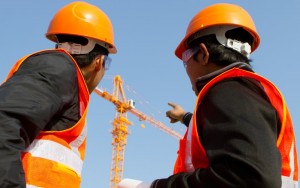 When you think about greenhouse emissions, you probably imagine large factories, spewing enormous quantities of volatile gases. In reality, large part of the greenhouse footprint is generated by the buildings. While some of the emissions are a result of regular operational needs like electricity and heating, the production and transportation of building materials also adds up sufficiently to the negative impact on the environment. The manufacturing process is not the only issue. The extraction of enormous amount of raw materials causes the fast depletion of natural resource.
When you think about greenhouse emissions, you probably imagine large factories, spewing enormous quantities of volatile gases. In reality, large part of the greenhouse footprint is generated by the buildings. While some of the emissions are a result of regular operational needs like electricity and heating, the production and transportation of building materials also adds up sufficiently to the negative impact on the environment. The manufacturing process is not the only issue. The extraction of enormous amount of raw materials causes the fast depletion of natural resource.
However, you can build an eco – friendly home with minimal or no hazards for the environment by using reclaimed building materials or materials with recycled content. They include bricks, flooring, lumber or even fancy antique fixtures. If you are hiring a building service, be sure that they use eco – friendly materials. Apart from the salvaged materials you can use alternative methods and options for your green construction.
Straw
Straw-bale building is a popular green construction method. The material is acquired by plants such as wheat, rice, barley oats, flax or rye. Then the bales are stacked on rebar or bamboo stakes. The primary advantage of this type of building is the great insulation it offers.
Cordwood
This construction uses short, round lengths of wood, stacked into a wall. Cordwood looks like the firewood you might have behind your fireplace. The log –like material is held together with mortar. This gives is amazing insulation and heat storage properties.
Earth
Take advantage of Mother Earth’s own materials! It can be anything from clay and dirt to sand. The type of materials depends on the green building methods. The best thing about these constructions is that they are completely fireproof.
- Adobe
Adobe is usually incorporated in constructions situated in sunny regions .These places are suitable for drying the bricks of straw and mud. Although, the materials can be found almost everywhere ( look right at your feet), the process of drying and stacking requires a lot of effort and time.
- Ceramic earth
The bricks or tubes consist of adobe and high clay content. In order to turn it into hardened ceramic, the walls are fired. These constructions are waterproof and earth –quake resistant or waterproof.
- Cob
Cob is very similar to adobe. It includes clay, sand, earth, straw and water. The only difference is that instead of being turned into bricks, a small amount of cob built up at a time. If you are ready to invest some skill and money, you can use cob for your future home. Hiring a building team is another alternative.
- Rammed earth
This is a man – made stone formed by soil and a tiny amount of Portland cement. The cement acts as a binding and strengthening agent. The rammed earth wall is almost as strong as concrete.
- Pneumatically Impacted Stabilized Earth (PISÉ)
The material has the same beautiful finish as rammed earth, but it takes less work. A one-sided form is placed over the building foundation and Again, you will need a combination of earth and Portland cement. The mixture is then sprayed onto one – sided form placed over the building’s foundation. This is not exactly a DIY project, because it requires some expertise. You should turn to expert builders.
More helpful building related tips read at: http://www.buildingservicesbuilders.co.uk/wimbledon-building-services-SW19/building-company-wimbledon.html
